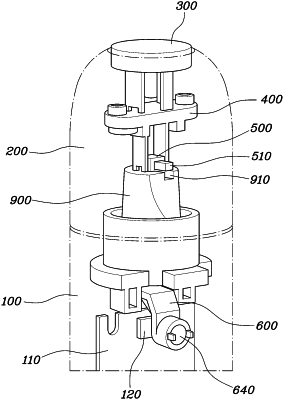| CPC F16H 59/08 (2013.01) [B60K 20/06 (2013.01); F16H 59/12 (2013.01); F16H 61/18 (2013.01); F16H 61/24 (2013.01); F16H 2059/081 (2013.01)] | 17 Claims |

|
1. A shift-by-wire system comprising:
a body configured to have a Hall sensor provided therein;
a knob configured to be rotatable around an axis of the body;
a button assembly including a magnet configured to rotate together with the knob, wherein the Hall sensor is configured to sense a rotation and a movement of the magnet, and the button assembly is configured to move in an axial direction of the body,
wherein the button assembly comprises:
a button provided at one end of the knob so as to be pressed, and
a shaft provided in the body in the axial direction and including one end connected to the button; and
a concurrent operation limiting unit configured to:
mechanically limit movement of the button assembly in a state in which the knob is manipulated so as to be rotated, and
mechanically limit rotation of the knob in a state in which the button assembly is manipulated so as to be moved,
wherein the concurrent operation limiting unit comprises:
operation prevention protrusions formed on side surfaces of the shaft;
a bullet housing fixed to an inside of the body such that the shaft passes through the bullet housing so as to be rotated and rectilinearly moved relative to the bullet housing; and
operation prevention recesses formed in one end of the bullet housing corresponding to the operation prevention protrusions.
|